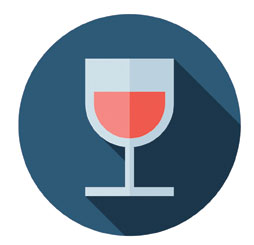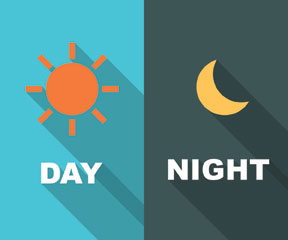Lift Up Your Glass: Moderate Drinking Tied To Fewer Deaths In Early-Stage Alzheimer’s
An aperitif every now and then may reduce risk of death in patients with early-stage dementia or Alzheimer’s disease, reports a recent study in BMJ Open.

Whether alcohol truly is a vice or a virtue in terms of preserving health has long been debated by researchers. Moderate drinking has been associated with a lower risk of developing and dying from heart disease and stroke. But alcohol is known to damage brain cells, and given that dementia is a neurodegenerative disorder, drinking might be harmful in those with the condition.
Danish researchers decided to weigh in on the half empty/half full debate by following for three years 321 people with early-stage dementia or Alzheimer’s disease. The group asked the patients’ caregivers to track how much they drank and compared these results with mortality data.
Tipplers—those who drink two to three units of alcohol every day—saw the most benefit. These drinkers had a 77 percent lowered risk of death compared with those who sipped one or fewer units. No difference in death rates occurred among abstainers or those who quaffed more than three units every day.
The study authors offer several explanations for the findings. For instance, moderate drinkers may have a richer social network, which has been linked to improved quality, and possibly length, of life. “We cannot solely, on the basis of this study, either encourage or advise against moderate alcohol consumption in patients with Alzheimer’s disease,” the authors write, suggesting that further studies are needed.
Gear Change: Aging Impacts Brain’s 24-Hour Clock
Brain research confirms the adage: “Times change and we with time.” As we age, our body’s internal clocks that regulate brain and body processes, called circadian rhythms, speed up and slow down, such that most of our clocks stay longer in the “morning” phase and less in the “night” phase.

“Studies have reported that older adults tend to perform complex cognitive tasks better in the morning and get worse through the day,” said psychiatrist Colleen McClung, MD, at Pitt School of Medicine and lead author of a recent article in the Proceedings of the National Academy of Sciences. “We also know that the circadian rhythm changes with aging, leading to awakening earlier in the morning, fewer hours of sleep, and less robust body temperature rhythms.”
Gene activity of these daily patterns has rarely been studied in the brain until now. McClung and her group examined post-autopsy brain samples of 146 people with no history of mental health or neurological problems, categorizing the brains on whether they came from a person younger than 40 or older than 60, and analyzing the prefrontal cortices for the gene expression of thousands of genes.
The team identified 235 core genes that make up the molecular clock in this part of the brain. They also found a set of genes that gained rhymicity in older individuals.
This information could ultimately be useful in the development of treatments for cognitive and sleep problems that can occur with aging, as well as a possible treatment for “sundowning,” a condition in which older individuals with dementia become agitated, confused, and anxious in the evening.
One-Two Punch: More Veterans With Advanced Cancer Using Hospice Care And Chemotherapy
A one-two punch is being increasingly employed by veterans with advanced cancer to fight this veritable foe: receipt of hospice care concurrently with chemotherapy or radiation therapy.

Unlike Medicare, the Veterans Health Administration (VA) health care system does not require veterans with cancer to make the “terrible choice” between receipt of hospice services or disease-modifying chemotherapy/radiation therapy.
Researchers led by Vincent Mor of the Providence VA Health Administration Medical Center in Rhode Island recently combed through VA and Medicare administrative data to see the numbers of hospice and cancer treatments received among veteran decedents with cancer from 2006 to 2012.
The proportion of veterans receiving chemotherapy or radiation therapy remained stable at approximately 45 percent, whereas the numbers of veterans who received hospice increased from 55 percent to 68 percent, they wrote in Cancer. Concurrent care, defined as days in the last six months of life during which veterans simultaneously received hospice services and chemotherapy or radiation therapy, rose during this time from 16.2 percent to 24.5 percent.
This dual strategy appeared to extend the patients’ lives. Of those in hospice and on chemo, the median time between treatment termination and death ranged from 35 to 40 days, compared with those who only had hospice (21 days).